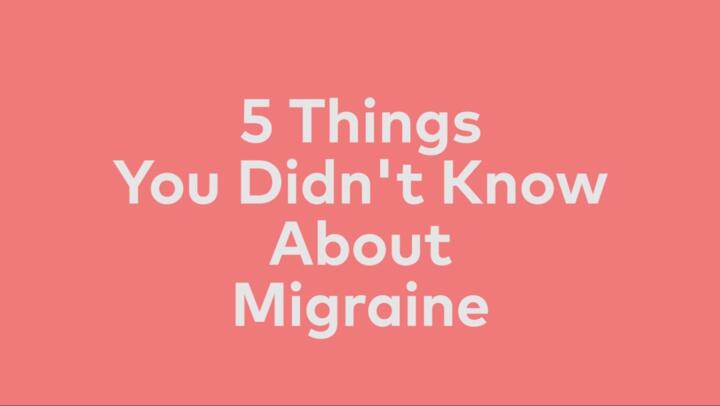
The word migraine typically calls to mind a severe, pounding pain in your head. But some types of migraines cause pain elsewhere in your body. Others cause no pain at all — only vision problems or other unusual symptoms. Understanding the features of your migraines can help you and your health care provider find a treatment plan that brings relief.
Migraine with Aura
Once called classic migraine, the name for this condition has changed to describe the experience that occurs before head pain strikes. The aura may cause your vision to cloud, blur, or even disappear in one or both eyes. You may also have trouble speaking, lose your appetite, develop sensitivity to light and sound, and feel weak, numb, or confused.
The aura usually subsides within an hour. At some point during that time, the throbbing, pulsing pain typical of migraines often sets in. However, some people experience an aura with no headache afterward.
Migraine without Aura
Most people with migraines do not experience the aura. Fatigue, trouble concentrating, neck stiffness, and food cravings can all serve as premonitions to a migraine’s arrival.
If you have migraine without aura, your head pain usually strikes on one side and will probably last four to 72 hours without treatment. Physical activity, light, and sound may make things worse, while medications can relieve symptoms.
Episodic Migraine
If your headaches strike 14 times per month or less, they are referred to as episodic migraines. They arrive less frequently, probably seem less severe, and don’t last as long as the headaches associated with a chronic migraine diagnosis.
Chronic Migraine
Each year, about 3% of people with episodic migraines develop chronic migraine. With this condition, you spend more days with a migraine than without — your headaches occur at least 15 days of the month and last four hours or longer.
Medication Overuse or Rebound Migraine
This form of chronic migraine occurs when you take medication to treat headaches too frequently or too quickly. As a result, your head pain becomes resistant to treatment. Try not to take pain medication more than two days per week, and ask your health care provicer about lifestyle changes that can help. These include relaxation techniques, physical activity, and weight loss.
Migraine with Brainstem Aura
Originating in the brainstem, these migraines most often strike teenage girls, especially around the time of their periods. They usually have an aura, followed by a sudden, throbbing pain on both sides of the back of their head. Other signs include dizziness, vision loss, double vision, fainting, slurred speech, ringing ears, loss of balance, and trouble coordinating muscle movements.
Abdominal Migraine
Some stomachaches follow an overdose of junk food. But stomach pain in children can also come from this type of migraine. Typically, kids with an abdominal migraine feel moderate to severe abdominal pain. Though they usually go away after a nap, these stomachaches can last up to 72 hours. Children often develop nausea, vomit, turn pale, flush, or lose their appetites as well. Typically, those who experience abdominal migraines during childhood develop regular migraines as they get older.
Hemiplegic Migraine
Rare but serious, these migraines leave you temporarily unable to move one side of your body. Paralysis occurs before or during your headache and sometimes takes days to go away. You may also see flickering lights, lose your vision, feel pins and needles, or have difficulty swallowing or speaking. In some cases, this disorder results from genetic mutations that run in families.
Retinal Migraine (also called Ocular Migraine)
Spasms of the blood vessels in your brain can leave you seeing wave-like lines in one or both eyes. These visual symptoms usually last 10 to 20 minutes; sometimes, headaches follow soon after. However, you can also have retinal migraines without head pain — this is called an ophthalmic migraine. See your ophthalmologist if you develop these signs.
Key Takeaways
- There are many types of migraines, including retinal migraine, abdominal migraine, medication overuse migraine, chronic migraine, and episodic migraine.
- Some types cause pain in parts of your body other than your head, while others cause no pain at all — only vision problems or other unusual symptoms.
- Understanding the features of your migraines can help you and your health care provider find a treatment plan that brings relief.



















